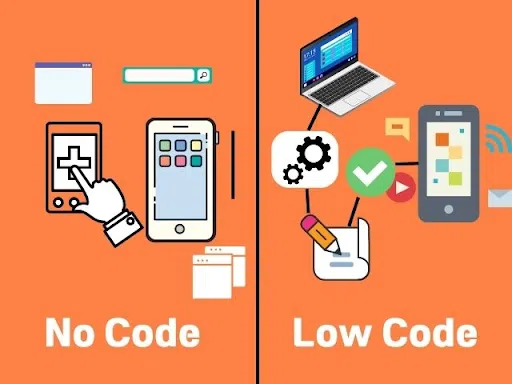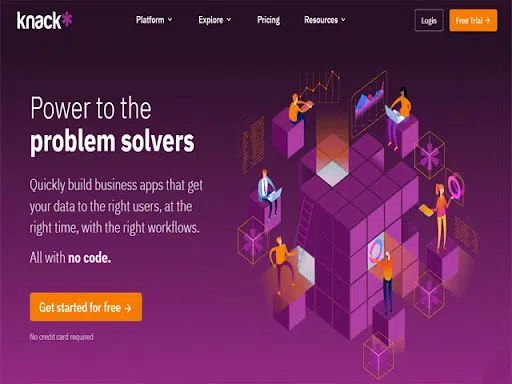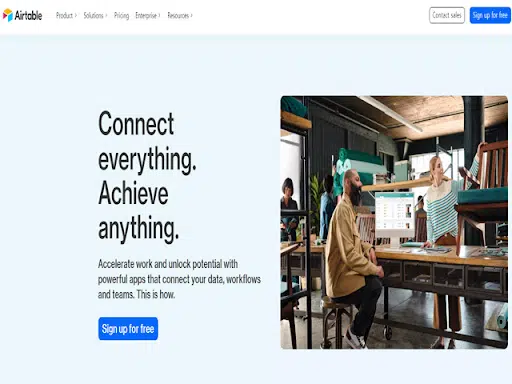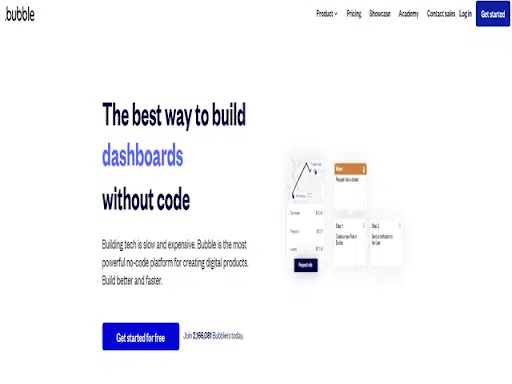The Ultimate Guide to No code and Low code Development Platforms

In today’s fast-paced digital world, everything is becoming more computerized, and competition for computer developers is getting fiercer. This means that people who can make software, both working in companies and on their own, are in high demand and can earn a good amount.
However, this situation often puts big companies at an advantage. They have more money and resources to hire these developers, leaving smaller businesses and individuals behind.
To help bridge this gap, there’s been a boom in what are called no code and low code platforms. These are special tools that make it much easier to build software, even if you’re not a seasoned developer.
Let’s dive in and explore how these platforms are changing the game for aspiring developers and the different tools they can use!
What are no code and low code Platforms?

We live in a time where everything is becoming digital. To keep up with this trend, businesses are turning to software to create customized platforms.
The problem? There are so many businesses, and each one needs something different. There are not enough developers to handle all this work, especially in the government and public sectors.
Both the government and private companies are trying to solve this problem by training more people in coding and programming. But this is not a quick solution – learning to code takes time, and there are a lot of hurdles to jump over.
Enter no code and low code platforms, which are gaining popularity in the software development world. With these platforms, even if you’ve never written a line of code before or don’t know much about programming, you can create the services or applications you need.
How? By simply piecing together templates within the platform.
It’s a game-changer for everyone who needs a digital solution but doesn’t have the time or resources to become a programming expert!

➤ No Code Platforms
No code, as the name implies, refers to the development of websites and applications without the need for coding. This means that even non-IT professionals can develop web and mobile applications within the platform.
➤ Low Code Platforms
On the other hand, low code is slightly different. While it does not completely eliminate coding, it minimizes and simplifies the process to the extent that even non-IT professionals can easily do coding similar to developers. It is designed to facilitate swift development in situations where there is high demand but a shortage of development personnel.
The Advantages of no code and low code
01 | Bridging the Digital Gap
One of the most significant benefits of no code and low code is that they enable anyone to build applications, even without the expertise of seasoned developers or freelance developers.
02 | Rapid Speed
No code and low code platforms are not just about making development possible; they also offer impressive speed. By using ready-made templates, a web or app can be created in a few clicks. Connecting a few interfaces completes the app implementation.
In essence, the entire development process is simplified to a few steps, like clicking and compiling, making rapid development a reality.
03 | Enhancing Business Efficiency

By adopting no code and low code development options, you can develop and support more functions. In other words, the ‘pie’ of coding grows larger. For instance, no code or low code can be used to provide services and operations optimized for each industry.
For example, a developer can create a simple function or app needed on-site, and an expert with a high understanding of the industry can analyze the data, resulting in faster and more efficient outcomes.
The efficiency of developers’ work can also be improved. Repetitive and standardized parts can be made into templates for development without coding or automation.
This can also minimize errors caused by mistakes and increase the efficiency of maintenance tasks.
Insights | Developers and no code/low code: Competition? Or Symbiosis?

Based on these advantages, no code and low code platforms are experiencing rapid growth as a pillar of the development market. Gartner, in particular, predicted that the worldwide low code development technology market would grow by about 20% in 2023, reaching a scale of $26.9 billion.
However, some freelance developers express concerns about what this means for them. Will no code and low code steal their jobs and completely replace the development ecosystem? Will we witness the dawn of a ‘developer-less development era’?
➤ Useful content about the ‘development ecosystem’: What Does a Blockchain Developer Do?
However, it is important to remember that no code/low code, as development platform tools, have some limitations.
Limitations of no code and low code
01 | No code/low code are Tools, Not Finished Products

No code and low code platforms are tools and means that facilitate development, not finished products. To utilize them properly, effective training on how to use these platforms is essential. In other words, depending on how the user employs them, they may or may not meet requirements and expectations.
For instance, it’s similar to a designer using Photoshop. The output of a designer who perfectly understands and adeptly manipulates all the functions of Photoshop is different from one who doesn’t!
02 | Developers are Still Needed
No code platforms are used by non-experts to develop and support without IT professionals. However, being a non-expert doesn’t always ensure the successful creation of the intended app or service; the assistance or supervision of an IT department may still be required.
As for low code, it differs slightly from no code. Unlike no code, which helps non-experts to use independently, low code aids developers in building solutions faster, easier, and with fewer resources than professional code solutions.
Thus, to develop applications, databases, etc., using low code, a certain level of coding experience is required. Consequently, the fact remains that developers with coding experience and IT expertise are still needed.
03 | The Key is Quick Application and Efficient Use
The essence of no code and low code is not ‘whether to code or not,’ but ‘how quickly and efficiently the technology is applied.’ This is well reflected in the way companies introduce and use no code and low code!
By utilizing no code, they provide various features for easy data analysis and app development, securing many users.
In other words, no code doesn’t replace existing developers but builds another ecosystem where developers support other users and non-experts to use no code and low code easily.
No Code | Knack

Source: Knack
With its clean and straightforward interface, the no code platform Knack allows anyone to quickly build business applications and offer services to users.
You can organize and easily connect data using appropriate types like email, name, etc. With JavaScript, you can extend and customize the interface to control the look and feel of your app.
Integration with Gmail, MailChimp, Dropbox, Google Drive, etc., allows for easy analysis, management, and sharing of data.
You can add in-app payments or secure payment systems like PayPal to e-commerce apps.
No Code | Airtable

Source: Airtable
Airtable helps develop applications with outstanding features and sophistication, modernizing business workflows.
You can use handy templates for product planning, product catalogs, bug tracking, product tracking, and launches.
Accelerate teamwork through custom notifications and automation of repetitive tasks.
Integration with services like Slack, Gmail, Facebook, Google Sheets, etc., simplifies workflows and facilitates collaboration.
With desktop and mobile apps, you can edit and synchronize changes from all user devices.
No Code | Bubble

Source: Bubble
With Bubble, you can effectively control design elements through a drag-and-drop interface.
- Extend functionality with JavaScript plugins and API integration.
- Applications made with Bubble can be translated into more than 80 languages.
Provides YouTube video tutorials.
Low Code | Microsoft PowerApps
Source: Microsoft PowerApps
PowerApps, which offers advanced features including pre-built artificial intelligence components, allows you to quickly create applications that solve your team’s tasks while innovating processes and increasing business agility.
- Pre-written templates and drag-and-drop features allow you to start building apps quickly.
- Using Microsoft’s database, you can access various data sources and easily organize and utilize them.
- You can expand and customize app features using Office 365 and Dynamics 365.
Low Code | Caspio

Source: Caspio
Consider Caspio if you want to build cloud applications. You can create sophisticated cloud applications that include forms, dashboards, and reports using intuitive tools!
- You can create unlimited online database applications that can be utilized in various fields such as sales, marketing, IT, operations, management, support, HR, finance, etc.
- It helps plan user permissions and workflows.
- You can build excellent location-based applications using distance search, map integration, geocoding, and proximity calculations.
- It supports 11 major languages so you can create multilingual apps, and it supports all international currencies, numbers, and date and time zones.
Low Code | Google AppSheet

Source: Google AppSheet
Using the AppSheet platform, which allows you to create mobile apps, you can include features like GPS and maps, image capture, signature capture, and barcode scanning in your app.
- Through customizable dashboards and automated notification processes, you can analyze and monitor collected and updated data in real time.
Improve data collection technology regardless of network connection through GPS location recording, photo collection and annotation, accepting signatures, and barcode scanning.
Low Code | Appian

Source: Appian
Through Appian, you can quickly create apps and workflows. You can coordinate manpower, systems, data, bots, and AI through a single process and manage them from a single interface.
- Improve productivity by automating common tasks in integrated workflows using low-code RPA or third-party RPA.
- You can design, execute, manage, and optimize complex processes.
- You can integrate the AI of Google, AWS, and Azure into your app, and easily process a large number of forms through intelligent document processing.
Low Code | Zoho Creator

Source: Zoho Creator
If you understand your business logic well, you can use Zoho Creator to easily create apps.
- You can accelerate the app development process using a collection of customizable templates, an intuitive code editor, and a visual builder that can be customized to your requirements.
Through a simple process, you can easily configure and automate workflows in the app.
Did you get useful information
and insights about No code and Low code?
As seen in the examples examined in the main text, no code and low code are rapidly emerging as a powerful means to enhance developer work efficiency and organizational productivity and to support non-IT experts.
Therefore, if you can use even no-code, low-code platforms well, you will be able to develop your career as a more competitive freelance developer in the future!
A skilled surfer is not someone who fights the waves, but someone who rides the waves that come at that moment well.
As a freelance developer who quickly accepts the new wave of change and demonstrates insight to respond flexibly, freelancer will continue to provide you with useful information.
Do you want to become a competitive IT freelance developer?
If so, check out the know-how of IT developers on the Freelancer blog!


